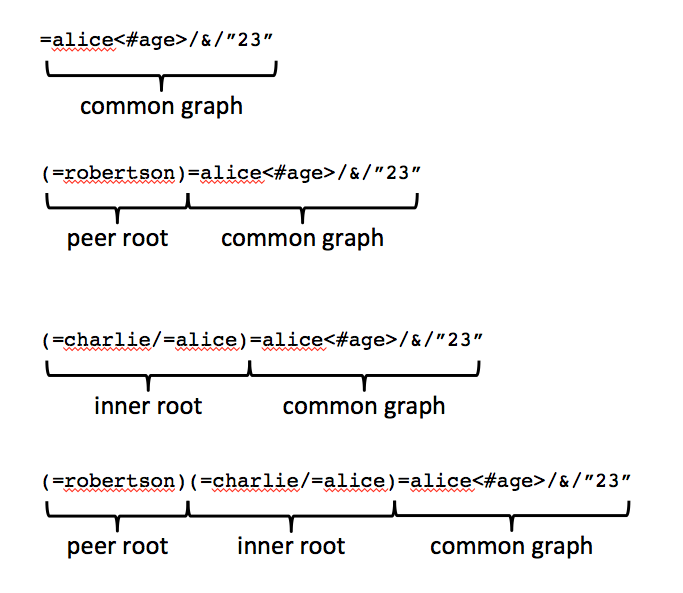XDI Graph Model
XDI graph: A collection of subject-predicate-object statements, conforming to the ABNF rules in the XDI Core specification, that represents a labeled, directed multi-graph. Every XDI statement corresponds to exactly one arc in the directed multi-graph amd vice versa.
XDI address: The unique address, expressed as a string, of any node in any XDI graph. The address is composed of the labels of every arc needed to identify that node. Note that, through the use of XDI equivalence relations (e.g., $ref and $rep), more than one XDI address may resolve to the same XDI graph node.
"REAL": An acronym for "Root, Entity, Attribute, Literal" -- the order in which the four basic node types may appear in an XDI graph.
Common root node: The starting node of all XDI graphs and the only node common to all XDI graphs. In the heterarchical XDI graph model, the XDI common root node can contain other peer root nodes and inner root nodes.
Peer root node: A node in a first XDI graph representing the root of a second XDI graph. Peer root nodes are how the XDI graph model can represent peer-to-peer relationships within a hierarchical directed graph. A peer root node in one XDI graph is a common root node in its own XDI graph. Each peer root node contains its own common graph which must be logically consistent with the common graph in all other peer roots.
Inner root node: A node in an XDI graph representing the root of another XDI graph whose subjects are all objects of the same XDI relation. Each inner root node contains its own common graph which is unique to that inner root graph because it can only be understood in the context of the relational statement that uniquely defines that inner graph.
Common graph: The subset of an XDI graph that begins with a root node but does not include any other root nodes, i.e. a common graph includes only entity, attribute, and literal nodes.
Peer graph: The graph contained by a peer root node. A peer graph may contain zero or more other peer graphs, zero or more inner graphs, and zero or one common graph.
Inner graph: The graph contained by an inner root node. An inner graph may contain zero or more other inner graphs and zero or one common graph.
Common address: An XDI address within a common graph, i.e., the portion of an XDI address that does not include any peer root nodes or inner root nodes.
